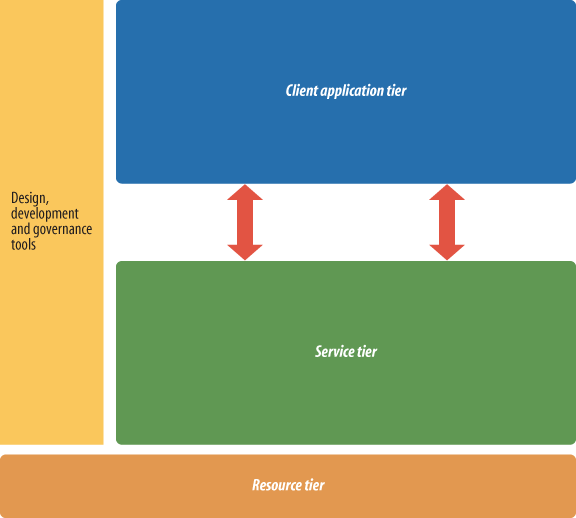The Web 2.0 Reference Architecture
The reference architecture shown in Figure 5-1 is an evolution of the abstract Web 2.0 model discussed in Chapter 4, with more detail added for developers and architects to consider during implementation. Each layer can contain many components, but at the top level of abstraction, they provide a foundation that applies to many different kinds of application.

Figure 5-1. Basic Web 2.0 Reference Architecture diagram
The components of this architecture are:
- Resource tier
The bottommost tier is the resource tier, which includes capabilities or backend systems that can support services that will be consumed over the Internet: that is, the data or processing needed for creating a rich user experience. This typically includes files; databases; enterprise resource planning (ERP) and customer relationship management (CRM) systems; directories; and other common applications an enterprise, site, or individual may have within its domain.
- Service tier
The service tier connects to the resource tier and packages functionality so that it may be accessed as a service, giving the service provider control over what goes in and out. Within enterprises, the classic examples of this functionality are J2EE application servers deploying SOAP or EJB endpoints. Web developers may be more familiar with PHP, Rails, ASP, and a wide variety of other frameworks for connecting resources ...
Get Web 2.0 Architectures now with the O’Reilly learning platform.
O’Reilly members experience books, live events, courses curated by job role, and more from O’Reilly and nearly 200 top publishers.

